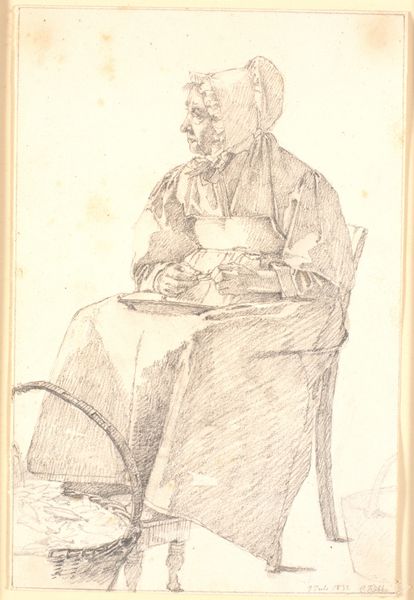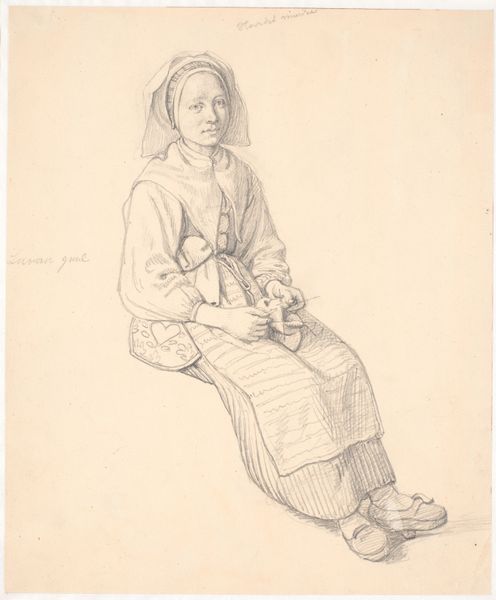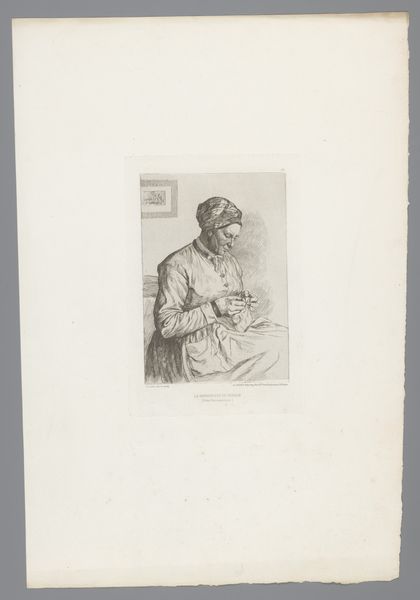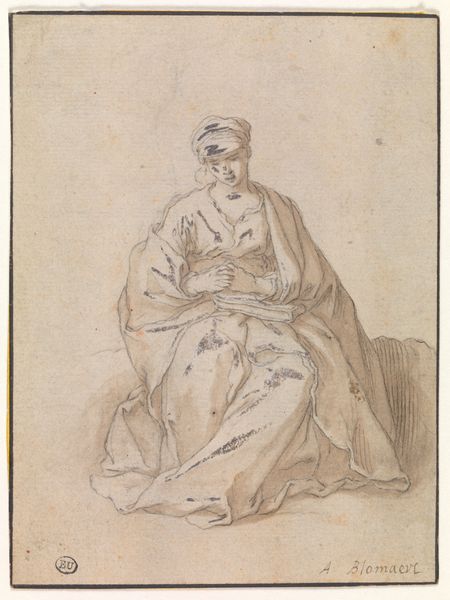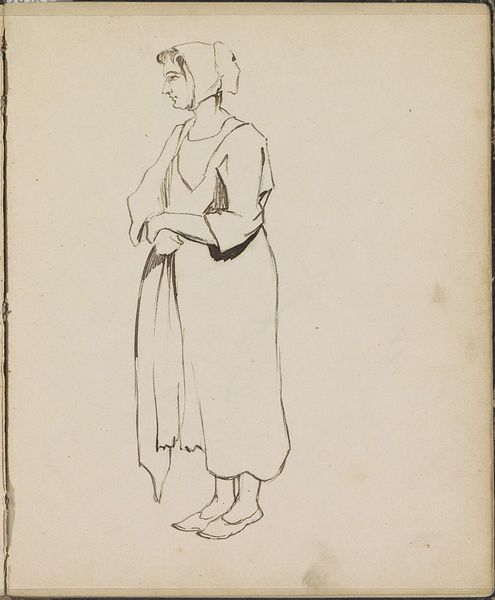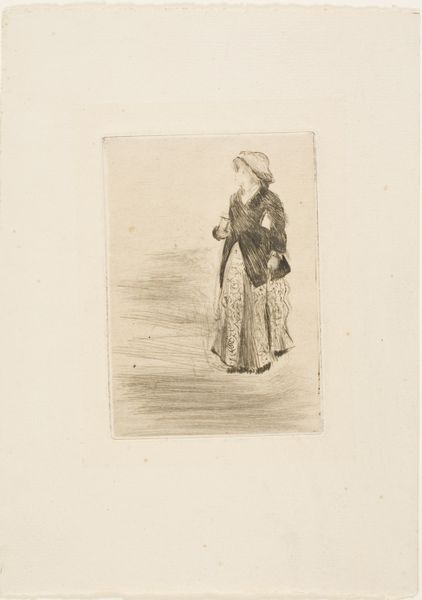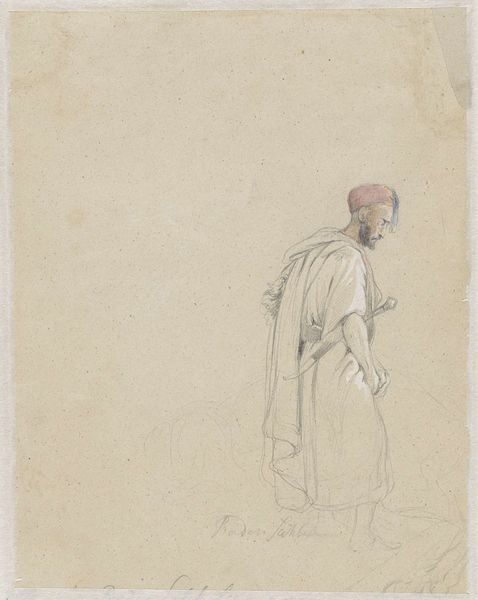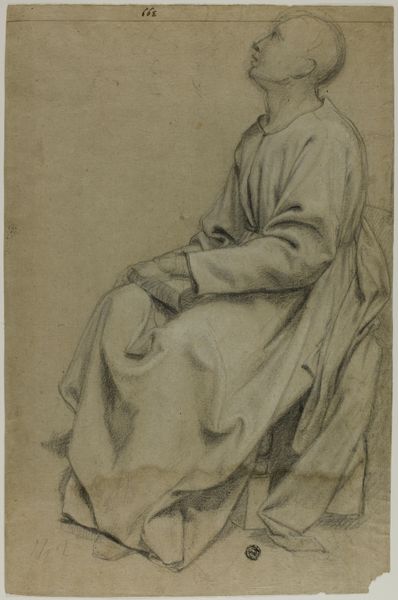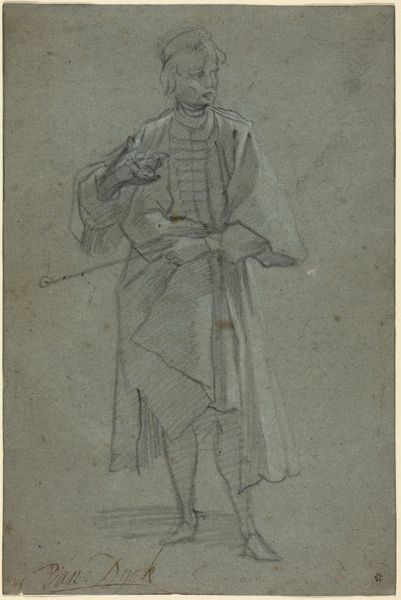
Dimensions: 168 mm (height) x 109 mm (width) (bladmaal)
Editor: This is "Siddende svensk bondekone," or "Seated Swedish Peasant Woman," a pencil drawing by Wilhelm Marstrand from 1851. It’s currently in the collection of the SMK, the National Gallery of Denmark. It's quite a simple sketch, really, but the way the artist captures the woman’s posture, her weariness… it feels very real. What can you tell me about this piece? Curator: Let’s think about what pencil, as a readily available material, meant for artistic representation at that time. The accessibility of pencil allowed for a different kind of artmaking – one that wasn't solely reliant on expensive paints or commissioned works. How might the relatively low cost and ease of use of the medium have impacted the subject matter chosen by artists like Marstrand, do you think? Editor: I guess it would enable more studies of ordinary people doing everyday things – a move away from the portraits of the wealthy that we tend to think of when we think about art in the 1800s. I also imagine pencils were easier to carry around and work with outdoors, too, which is a big change from painting with oils. Curator: Exactly! We can see how this medium democratized the artistic process, making it more accessible to a wider range of artists and subjects. This shift toward representing the everyday experiences of the working class challenges the traditional hierarchies within the art world. Think about the paper itself – its texture and availability. Was it expensive? How does the quality of the paper impact the drawing? Editor: It seems like pretty standard paper for drawing, not high quality by any means, which again puts it in contrast to a painting on canvas in a gilded frame. And her clothing looks utilitarian, and quite worn, right? This contrasts with more luxurious fabrics. It really emphasizes that she's not of a wealthy class. Curator: Precisely! The choice of materials, from the pencil itself to the paper it marks, speaks volumes about the artist's intent to depict a specific social reality, highlighting labor, materiality, and consumption within the art itself. The apparent simplicity is deceptive, really. Editor: So by examining the materials and process, we can read this piece as more than just a simple sketch; it’s a commentary on social class and the changing landscape of artistic representation! Curator: Absolutely. It’s about grounding the art historical object within a tangible reality of production.
Comments
No comments
Be the first to comment and join the conversation on the ultimate creative platform.

